Product Information
General Information
Safety Signal Words
The safety signal words Danger, Warning, Caution, and Notice have the following meanings:
DANGER | DANGER indicates a hazardous situation which, if not avoided, will result in death or serious injury. |
WARNING | WARNING indicates a hazardous situation which, if not avoided, could result in death or serious injury. |
CAUTION | CAUTION, used with the safety alert symbol, indicates a hazardous situation which, if not avoided, could result in minor or moderate injury. |
NOTICE | NOTICE is used to address practices not related to personal injury. |
Warranty
Product warranty will expire 12 months after the product is first taken into use, but will in any case expire at the latest 13 months after delivery.
Normal wear and tear on parts is not included within the warranty.
Normal wear and tear is that which requires a part change or other adjustment/overhaul during standard tools maintenance typical for that period (expressed in time, operation hours or otherwise).
The product warranty relies on the correct use, maintenance, and repair of the tool and its component parts.
Damage to parts that occurs as a result of inadequate maintenance or performed by parties other than Atlas Copco or their Certified Service Partners during the warranty period is not covered by the warranty.
To avoid damage or destruction of tool parts, service the tool according to the recommended maintenance schedules and follow the correct instructions.
Warranty repairs are only performed in Atlas Copco workshops or by Certified Service Partners.
Atlas Copco offers extended warranty and state of the art preventive maintenance through its ToolCover contracts. For further information contact your local Service representative.
For electrical motors:
Warranty will only apply when the electric motor has not been opened.
ServAid
ServAid is a portal that is continuously updated and contains Technical Information, such as:
Regulatory and Safety Information
Technical Data
Installation, Operation and Service Instructions
Spare Parts Lists
Accessories
Dimensional Drawings
Please visit: https://servaid.atlascopco.com.
For further Technical Information, please contact your local Atlas Copco representative.
Safety Data Sheets MSDS/SDS
The Safety Data Sheets describe the chemical products sold by Atlas Copco.
Please consult the Atlas Copco website for more information www.atlascopco.com/sds.
Product Safety Video for Nutrunners
Learn more about safety features on Atlas Copco nutrunners and what measures the operator has to take for a safe operation. Click the link or scan the QR code below to view the video:
https://www.youtube.com/watch?v=FAh6yttvUpw
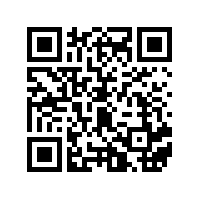
Country of Origin
For the Country of Origin, please refer to the information on the product label.
Dimensional Drawings
Dimensional Drawings can be found either in the Dimensional Drawings Archive, or on ServAid.
Please visit: http://webbox.atlascopco.com/webbox/dimdrw or https://servaid.atlascopco.com.
Overview
General Description
Powered by a new battery generation from Atlas Copco, Tensor SRB Cordless Nutrunner delivers one-handed operation with accuracy, traceability and flexibility. The SRB reports wirelessly to the Power Focus 6000 system and takes full advantage of Virtual Stations, able to perform low reaction strategies as a Turbo Tight and Tensor Pulse, and traditional strategies as the two steps. The Tensor SRB is ideal for low toque application where the reaction force hits the operator wrist. It is light weight and has a great balance – ergonomically designed to prevent operator fatigue.
Features
Slim design
All kind of strategies: Traditional and Low Reaction
One handed cable free
Operator feedback and battery status via LED indicator
A buffer battery makes battery swaps trouble free
Integrated indicator on the battery shows battery and health status
Dual antenna
Rapid Backup Unit (RBU) functionality
Benefits
High productivity and accuracy
Fast tightening
Full traceability
Short tightening cycle
Easy to set up
Technical Product Data
Technical Product Data can be found on either ServAid, or the Atlas Copco website.
Please visit: https://servaid.atlascopco.com or www.atlascopco.com.
Service Overview
Service Recommendations
Preventive maintenance is recommended at regular intervals. See the detailed information on preventive maintenance. If the product is not working properly, take it out of service and inspect it.
If no detailed information about preventive maintenance is included, follow these general guidelines:
Clean appropriate parts accurately
Replace any defective or worn parts
Installation
Installation Instructions
Attaching and Removing the Battery
Attach the battery to the tool and make sure that it is fastened correctly. The battery can be attached pointing forward or backward to get the best accessibility and balance.
To remove the battery, press the button on the battery and push it out.
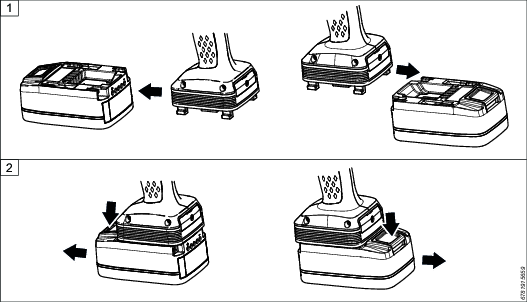
Operation
Ergonomic Guidelines
Consider your workstation as you read through this list of general ergonomic guidelines to identify areas for improvement in posture, component placement, or work environment.
Take frequent breaks and change work positions frequently.
Adapt the workstation area to your needs and the work task.
Adjust for a convenient reach range by determining where parts and tools need to be located to avoid static load.
Use workstation equipment such as tables and chairs appropriate for the work task.
Avoid work positions above shoulder level or with static holding during assembly operations.
When working above shoulder level, reduce the load on the static muscles by lowering the weight of the tool, using for example torque arms, hose reels or weight balancers. You can also reduce the load on the static muscles by holding the tool close to the body.
Take frequent breaks.
Avoid extreme arm or wrist postures, particularly during operations requiring a degree of force.
Adjust for a convenient field of vision that requires minimal eye and head movements.
Use appropriate lighting for the work task.
Select the appropriate tool for the work task.
In noisy environments, use ear protection equipment.
Use high-quality inserted tools and consumables to minimize exposure to excessive levels of vibration.
Minimize exposure to reaction forces.
When cutting:
A cut-off wheel can get stuck if the cut-off wheel is bent or not guided properly. Use the correct flange for the cut-off wheel and avoid bending the cut-off wheel during operation.
When drilling:
The drill might stall when the drill bit breaks through. Use support handles if the stall torque is high. The safety standard ISO11148 part 3 recommends using a device to absorb a reaction torque above 10 Nm for pistol grip tools and 4 Nm for straight tools.
When using direct-driven screwdrivers or nutrunners:
Reaction forces depend on the tool settings and joint characteristics. Strength and posture determine the amount of reaction force that an operator can tolerate. Adapt the torque setting to the operator's strength and posture and use a torque arm or reaction bar if the torque is too high.
In dusty environments, use a dust extraction system or wear a mouth protection mask.
Operating Instructions
Tightening
As tightening torque increase the reaction force build up equally. Make sure that the tool is in correct working order and that the controller is correctly programmed. By doing this you avoid unexpected behavior from the tool, which may result in operator injury.
Rotation Direction for the Tightening
Check that the tool is in the correct running direction by turning the reverse button or reverse ring :
Pistol Grip Models (with side buttons)
Press in the reverse switch on the right hand side of the tool, to set the direction clockwise (CW).
Press in the reverse switch on the left hand side of the tool, to set the direction counter clockwise (CCW).
Pistol Grip Models (without side buttons)
Double press the function button on the top of the start trigger to shift the direction between clockwise (CW) and counter clockwise (CCW).
Angle Models
Turn the reverse ring to the right, to set the direction clockwise (CW).
Turn the reverse ring to the left, to set the direction counter clockwise (CCW).
Soft Start
The soft start function facilitates the screwhead and thread to reach the snug level. The duration of the soft start is adjustable.
For further information about tightening, see Power Focus 6000 Configuration manual.
General instructions
The tool may only be used together with the associated torque reaction bar, which is adapted to the screw joint application concerned.
Attach the reaction bar to the tool and insert the retaining ring into the groove to hold the reaction bar in position.
Attach the socket to the square drive. Insert the locking pin through the socket and square drive according to the illustration.

Special precaution
RHMI
Overview
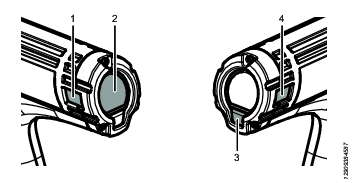
1 | Navigation button |
2 | Display screen |
3 | Confirmation button
|
4 | Navigation button |
Menu
Result
Go back to main screen to show tightening results.Tightening
Show a list of preloaded programs from Power Focus 6000 in production mode or enable user to edit a manual program in field mode.Batch
Configure batch. Does not apply to -HA-D and SRB-D tools.Information
Enable/disable web-HMI(only available for -HA, -HA-D, and SRB-D tools in smart mode), show battery information, temperatures, software version and so on.Configuration
Configure tool button and front light settings.Tightening results
Show a list of the last tightening results.
Service
Preventing ESD Problems
The components inside the product and controller are sensitive to electrostatic discharge. To avoid future malfunction, make sure that service and maintenance is carried out in an ESD approved work environment. The figure below shows an example of an appropriate service work station.
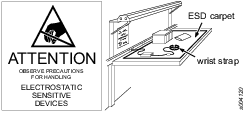
Maintenance Instructions
Service Recommendations
Preventive maintenance is recommended at regular intervals. See the detailed information on preventive maintenance. If the product is not working properly, take it out of service and inspect it.
If no detailed information about preventive maintenance is included, follow these general guidelines:
Clean appropriate parts accurately
Replace any defective or worn parts
Service instructions
Overhaul and preventive maintenance is recommended at regular intervals once per year or after maximum 250.000 tightening depending on which occurs sooner. More frequent overhaul may be needed if used at high torque, high cycle rate or long tightening times. If the machine is not working properly, it should immediately be taken away for inspection.
At the overhauls, all parts should be cleaned accurately and defective or worn parts (i.e. O-rings) should be replaced.
Lubrication Instructions
Lubricating Guide
Brand | Internal gear | General purpose | Front Gear |
|---|---|---|---|
Rhenus | LKR 03 | - | - |
Almagard | - | LE 3751 | - |
Molycote | - | - | BR2 plus |
Dismantling/Assembling Instructions
Dismantling
Dismantling the Front Gear
Remove the screw.
Turn the locking ring and pull out the front gear.

Dismantling the Dual Trigger
Remove the locking screw.
Slightly turn the dual trigger to uncover the screw on the front lid.
Remove the screws.
Remove the lid and detach the cables.
Pull out the dual trigger.
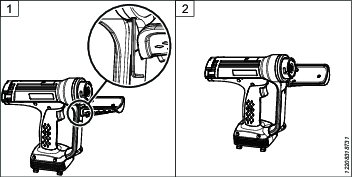
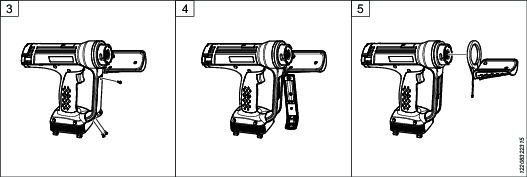
Dismantling the Power Module
Remove the screws and pull out the power module.
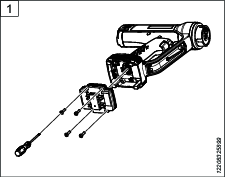
Dismantling the HMI
Remove the screws and the back cover.
Pull out the HMI and detach the cable.
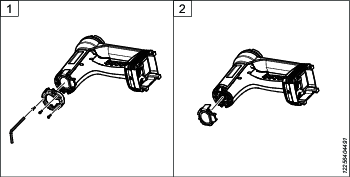
Dismantling the Handle
Remove the screws to remove the handle.
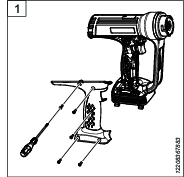
Dismantling the Start Trigger
Lightly press the trigger (A) and push out the locking pin (B) using a tweezer.
Use pliers to remove the locking pin.
Remove the start trigger.
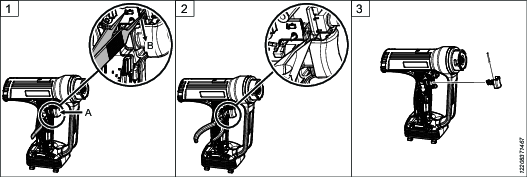
Dismantling the Function Button and Configuration Board
Lift the function button from the slot to remove it.
Lift the configuration board to remove it.
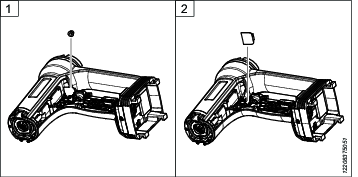
Dismantling the Main Board
Remove the screw to be able to remove the main board.
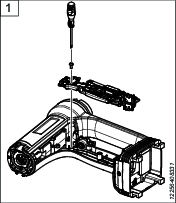
Dismantling the Internal Gear
Remove the screws, followed by the internal gear and the intermediate shaft.
Remove the screws to be able to pull out the gear identification board.
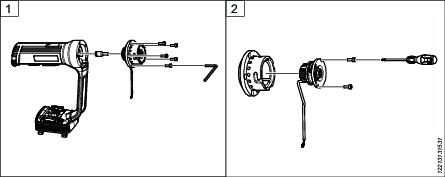
Dismantling the Front Bearing Shield
Remove the screws to remove the bearing shield.
Remove the wave spring using a tweezer.
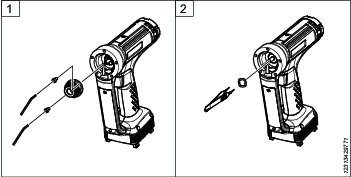
Dismantling the Commutation Board
Remove the screws.
Remove the locking ring to remove the commutation board.
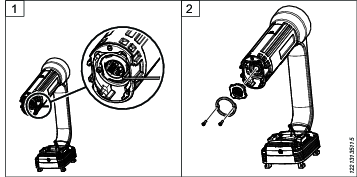
Dismantling the Commutation Magnet
Use plier 4080 1180 80 to grab and remove the commutation magnet.
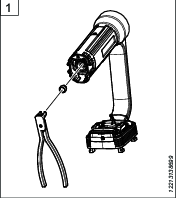
Dismantling the Rear Bearing Shield
Remove the locking screw.
Remove the bearing shield.

Dismantling the Accessory Board
Remove the screw.
Remove the accessory lid.
Remove the screw.
Pull out the accessory board and disconnect the cable.
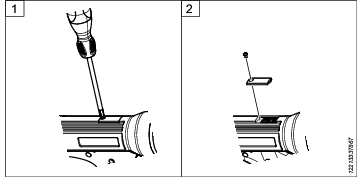
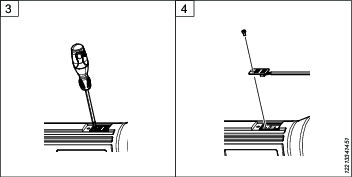
Assembling
Assembling the Accessory Board
Attach the cable and insert the accessory board.
Tighten the screw on the accessory board
Tighten the screw on the lid.

Assembling the Rear Bearing
Insert the bearing shield.
Tighten the locking screw.
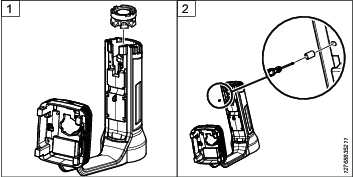
Assembling the Commutation Magnet
Insert the commutation magnet.
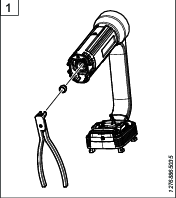
Assembling the Commutation Board
Insert the commutation board.
Tighten the screws to fasten the locking ring.
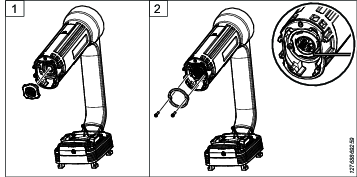
Assembling the Front Bearing Shield
Insert the wave spring.
Install the bearing shield. And feed the cable through the channel to be able to attach it.
Tighten the screws.

Assembling the Internal Gear
Insert the gear identification board.
Insert internal gear. And feed the cable through the channel.
Tighten the screws to fasten the internal gear.
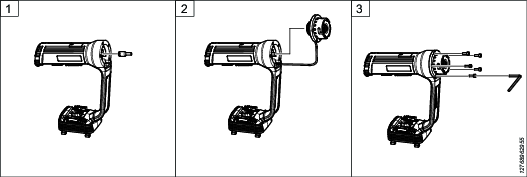
Assembling the Main Board
Tighten the screw to fasten the main board.
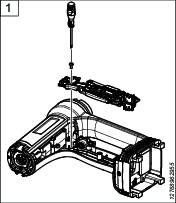
Assembling the Function Button and Configuration Board
Insert the configuration board and attach the cable.
Insert the function button into the slot.
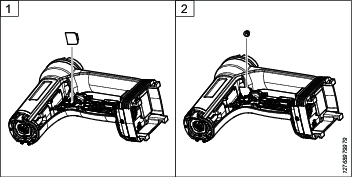
Assembling the Start Trigger
Place the start trigger in the slot.
Slightly press the trigger (A) and insert the locking pin (B) with pliers.
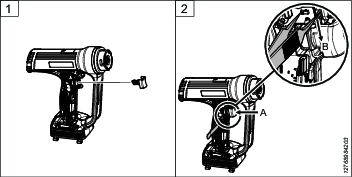
Assembling the Handle
Tighten the screws to attach the handle.
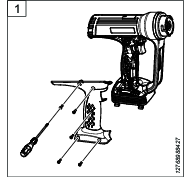
Assembling the HMI
Install the HMI and attach the cable.
Install the back cover and fasten the screws.
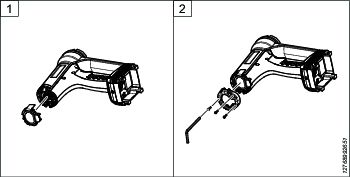
Assembling the Power Module
Install the power module and tighten the screws.

Assembling the Dual Trigger
Install the dual trigger and feed the cable through the channel.
Attach the cables on the front lid.
Tighten the screws to fasten the front lid.
Turn the dual trigger to the correct position.
Tighten the locking screw of the trigger.
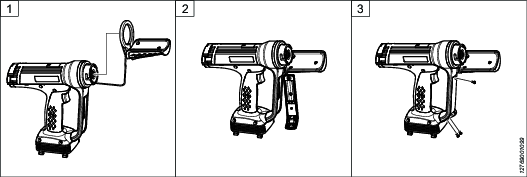
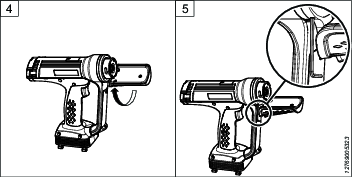
Assembling the Front Gear
Install the front gear and turn the locking ring to the correct position.
Tighten the screw.

Troubleshooting
Overheated Tool
The tool can handle any normal line jobs that an operator sustains with the proper adjustments.
The tool temperature can be influenced by the following parameters:
short cycle time
torque above rated
too low speed
very high prevailing torque
very soft joints
ambient temperature
Recycling
Environmental Regulations
When a product has served its purpose it has to be recycled properly. Dismantle the product and recycle the components in accordance with local legislation.
Batteries shall be taken care of by your national battery recovery organization.
Recycling information
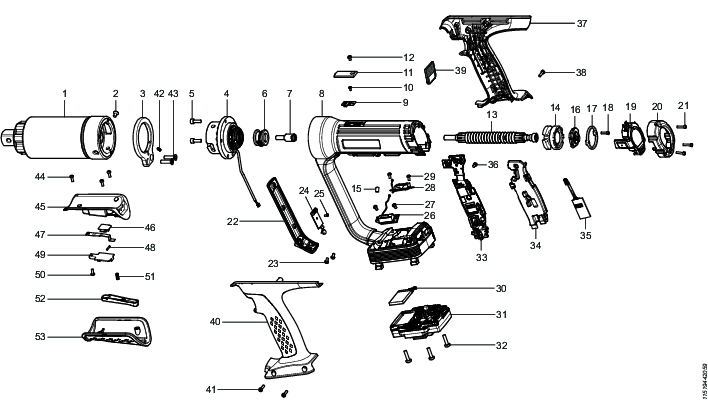
Pos. | Part | Remarks | Recycle as |
|---|---|---|---|
1 | Front gear |
| Metal, steel |
2 | Screw | Metal, steel | |
3 | Mount plate | Metal, aluminium | |
4 | Internal gear | Metal, steel | |
5 | Screw | 5 pcs | Metal, steel |
6 | Transducer | Electronics | |
7 | Intermediate shaft | Metal, steel | |
8 | Motor frame and stator | Metal, aluminium and steel | |
9 | Accessory board | Electronics | |
10 | Screw | Metal, steel | |
11 | Accessory lid | Metal, aluminium | |
12 | Screw | Metal, steel | |
13 | Rotor | Metal, Neodymium | |
14 | Rear bearing shield | Metal, aluminium | |
15 | Screw | Metal, steel | |
16 | Commutation board | Electronics | |
17 | Locking ring | Metal, aluminium | |
18 | Screw | 2 pcs | Metal, steel |
19 | HMI complete | Electronics | |
20 | Back cover | Metal, aluminium | |
21 | Screw | 3 pcs | Metal, steel |
22 | Front lid | Metal, aluminium | |
23 | Screw | 3 pcs | Metal, steel |
24 | Front light board | Electronics | |
25 | Screw | Metal, steel | |
26 | Antenna | Electronics | |
27 | Screw | 2 pcs | Metal, steel |
28 | Antenna | Electronics | |
29 | Screw | 2 pcs | Metal, steel |
30 | Backup battery | Battery, Li-Ion | |
31 | Power module | Electronics | |
32 | Screw | 4 pcs | Metal, steel |
33 | Main board module | Electronics | |
34 | Main board support rubber | Rubber, PUR | |
35 | Radio module | Electronics | |
36 | Screw | Metal, steel | |
37 | Handle right | Plastic, other, PA | |
38 | Screw | 5 pcs | Metal, steel |
39 | Configuration board | Electronics | |
40 | Handle left | Plastic, other, PA | |
41 | Screw | 2 pcs | Metal, steel |
42 | Screw | Metal, steel | |
43 | Screw | 2 pcs | Metal, steel |
44 | Screw | 3 pcs | Metal, steel |
45 | Dual trigger base | Metal, Zinc | |
46 | Switch | Electronics | |
47 | Spring | Metal, steel | |
48 | Pin | Metal, steel | |
49 | Trigger holder | Metal, steel | |
50 | Screw | Metal, steel | |
51 | Spring | Metal, steel | |
52 | Trigger | Metal, steel | |
53 | Dual trigger grip | Plastic, other, PA |

